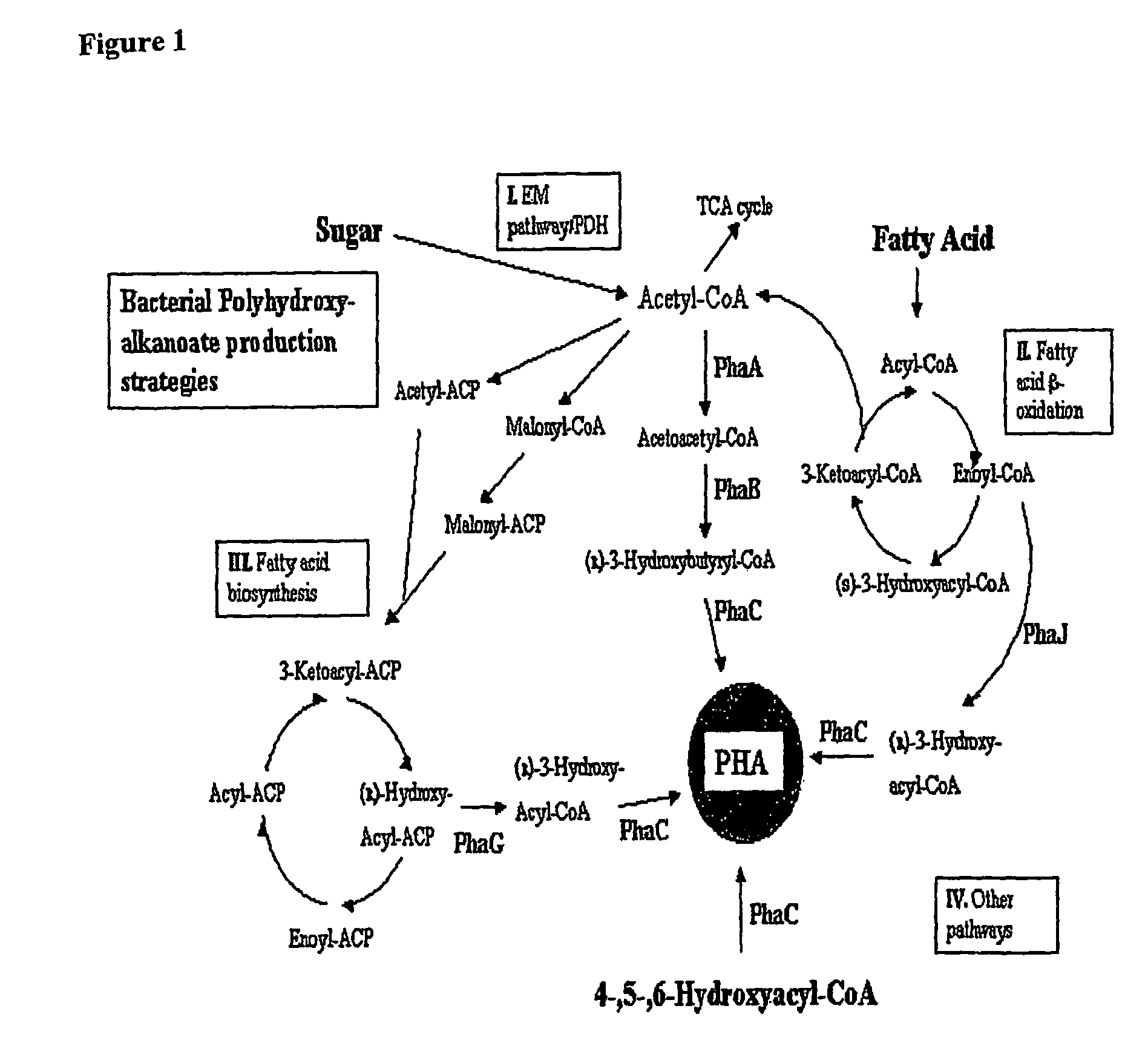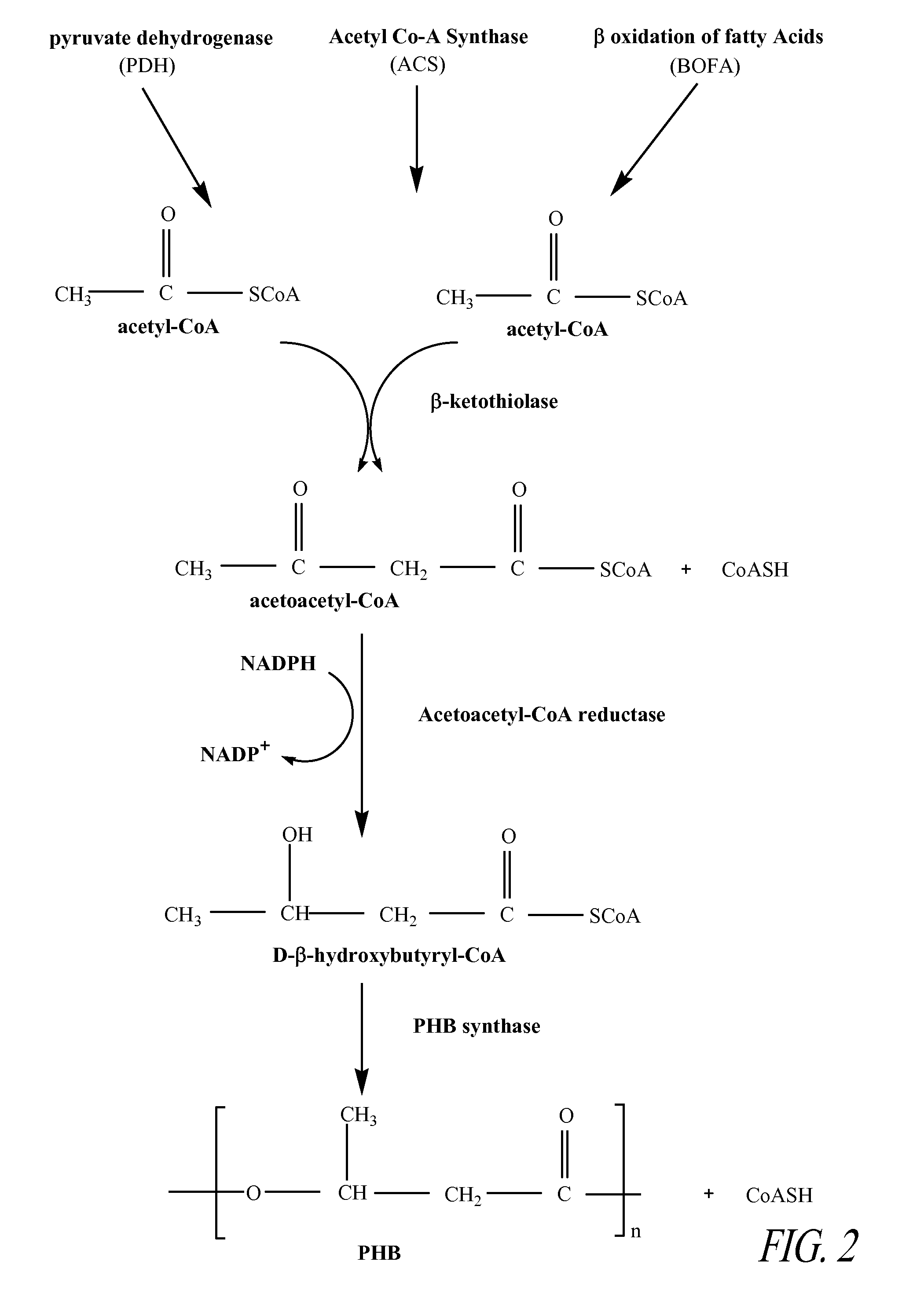Transgenic plants used as a bioreactor system
a bioreactor and transgenic technology, applied in the field of transgenic plants used as bioreactor systems, can solve the problems of large financial cost of establishing sufficient infrastructure to generate recombinant products, inability to scale up fermentation processes, and inability to meet the needs of large-scale production, etc., to achieve rapid growth, high biomass accumulation, and efficient carbon fixation
- Summary
- Abstract
- Description
- Claims
- Application Information
AI Technical Summary
Benefits of technology
Problems solved by technology
Method used
Image
Examples
example 1
Materials
[0534]Restriction digests, DNA ligations and all other DNA manipulations were performed as described in Sambrook, et al., Molecular Cloning, A Laboratory Manual, 2nd edition, Cold Spring Harbor Press, 1989.
example 2
Cloning of the phaC1 Gene from P. aeruginosa
[0535]The phaC1 gene targeted to plant peroxisomes inserted into pART27 as an EcoRI / XbaI fragment, was obtained from Y. Poirier (University of Lausanne, Switzerland). In order to express the gene in sugarcane, it was excised with the said enzymes, end-filled with T4 DNA polymerase (Promega) and inserted into the SmaI site of pUBI-MCS-Nos. To achieve targeting of the phaC1gene product to mitochondria and plastids, the gene is modified as described below.
example 3
Generation of Genetic Constructs
(a) Constructs Comprising Sequences Encoding PHB-synthesizing Enzymes
[0536]Constructs containing the phaA, phaB and phaC genes from Ralstonia eutropha targeted to plastids and cloned in pUC 18 as XbaI-SacI fragments were obtained from Y. Poirier (University of Lausanne, Switzerland).
[0537]The phaA, phaB and phaC genes derived from Ralstonia eutropha were cloned into the vector pU3z. This vector is a derivative of pGEM3 (Promega) containing the maize polyubiquitin promoter and nos terminator from A. tumefaciens, and works well as an expression vector in sugarcane. All genes were amplified / modified using the polymerase chain reaction (PCR) prior to insertion into pU3z except phaC1, which was blunt-end cloned into the same vector. All constructs used for plant transformation are listed below. Where inserts are modified, they are sequenced in full to ensure quality.
[0538]PCR modifications were performed as follows. Platinum Pfx (registered trademark) DNA ...
PUM
| Property | Measurement | Unit |
|---|---|---|
| dry-weight | aaaaa | aaaaa |
Abstract
Description
Claims
Application Information
 Login to View More
Login to View More - R&D
- Intellectual Property
- Life Sciences
- Materials
- Tech Scout
- Unparalleled Data Quality
- Higher Quality Content
- 60% Fewer Hallucinations
Browse by: Latest US Patents, China's latest patents, Technical Efficacy Thesaurus, Application Domain, Technology Topic, Popular Technical Reports.
© 2025 PatSnap. All rights reserved.Legal|Privacy policy|Modern Slavery Act Transparency Statement|Sitemap|About US| Contact US: help@patsnap.com



